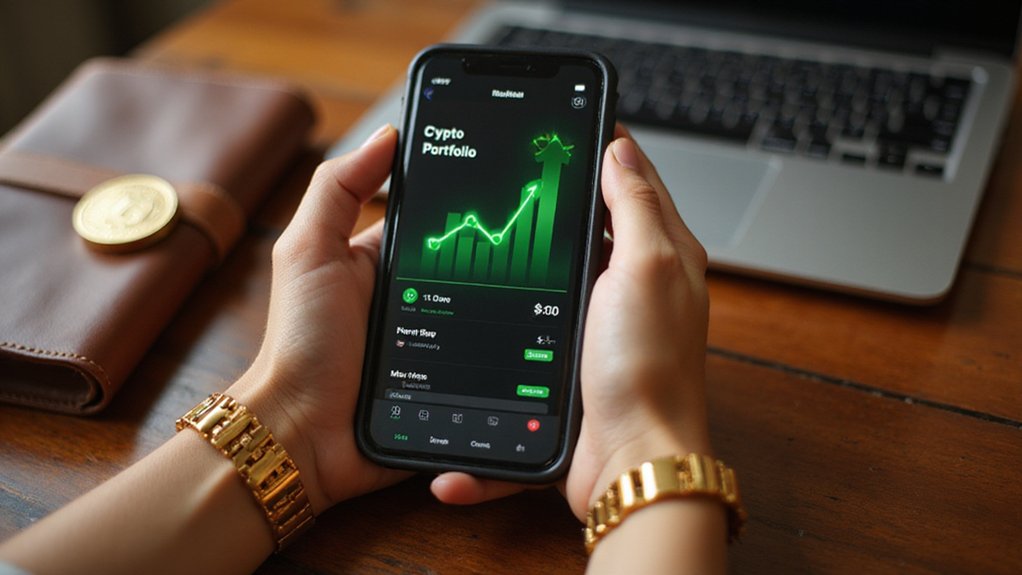The cryptocurrency affiliate marketing landscape of 2025 presents a curious paradox: while traditional finance continues to regard digital assets with the wariness typically reserved for door-to-door salesmen, major exchanges are quietly dispensing commission rates that would make even the most shameless multilevel marketing scheme blush with envy.
Binance leads this generous parade, offering affiliates up to 50% commission on referrals’ trading activities—a figure that would require several double-takes from traditional brokerage executives accustomed to single-digit payouts.
Coinbase matches this enthusiasm with its own 50% commission structure, though with the caveat of a three-month limitation and 30-day cookie duration (because nothing says “long-term partnership” quite like a month-long commitment window).
The appeal extends beyond mere commission percentages.
Trust Wallet, KuCoin, and Ledger have constructed affiliate ecosystems that transform hardware sales and wallet installations into recurring revenue streams.
This diversification allows marketers to monetize everything from speculative trading to security-conscious storage solutions, creating multiple income tributaries within the same volatile watershed.
Smart affiliates are leveraging social media platforms and targeted marketing techniques, including emerging Web3 Cookie technology, to reach audiences already primed for digital asset adoption. Blockchain-Ads delivers particularly impressive results with an average ROI of 6X per affiliate campaign, demonstrating the potential returns available through specialized Web3 advertising approaches.
The key lies in establishing authority within crypto communities—no small feat given the space’s inherent skepticism toward anyone resembling a traditional salesperson.
Payment structures reveal the industry’s operational maturity.
Programs typically offer monthly or quarterly payouts through PayPal, bank transfers, or cryptocurrency deposits, with minimum thresholds that vary considerably between platforms.
Some require specific referral volumes before triggering payments, adding performance pressure that keeps affiliates actively engaged rather than passively collecting. SimpleSwap stands out by allowing affiliates to set their own commission rates between 0.4% and 5%, providing unprecedented control over earnings potential.
The regulatory environment remains the proverbial sword of Damocles, with potential policy shifts capable of dramatically altering program profitability overnight. Binance’s approach of operating without a fixed headquarters while maintaining global operations exemplifies the industry’s adaptability to regulatory challenges.
Yet the growing global demand for cryptocurrency services continues driving expansion, creating opportunities for those willing to navigate compliance requirements while building sustainable marketing operations.
Performance analysis and continuous optimization separate successful affiliates from casual participants.
Those who treat crypto affiliate marketing as a serious business venture—complete with data-driven strategies and systematic audience development—typically achieve the substantial earnings that initially attracted them to these surprisingly lucrative programs.









